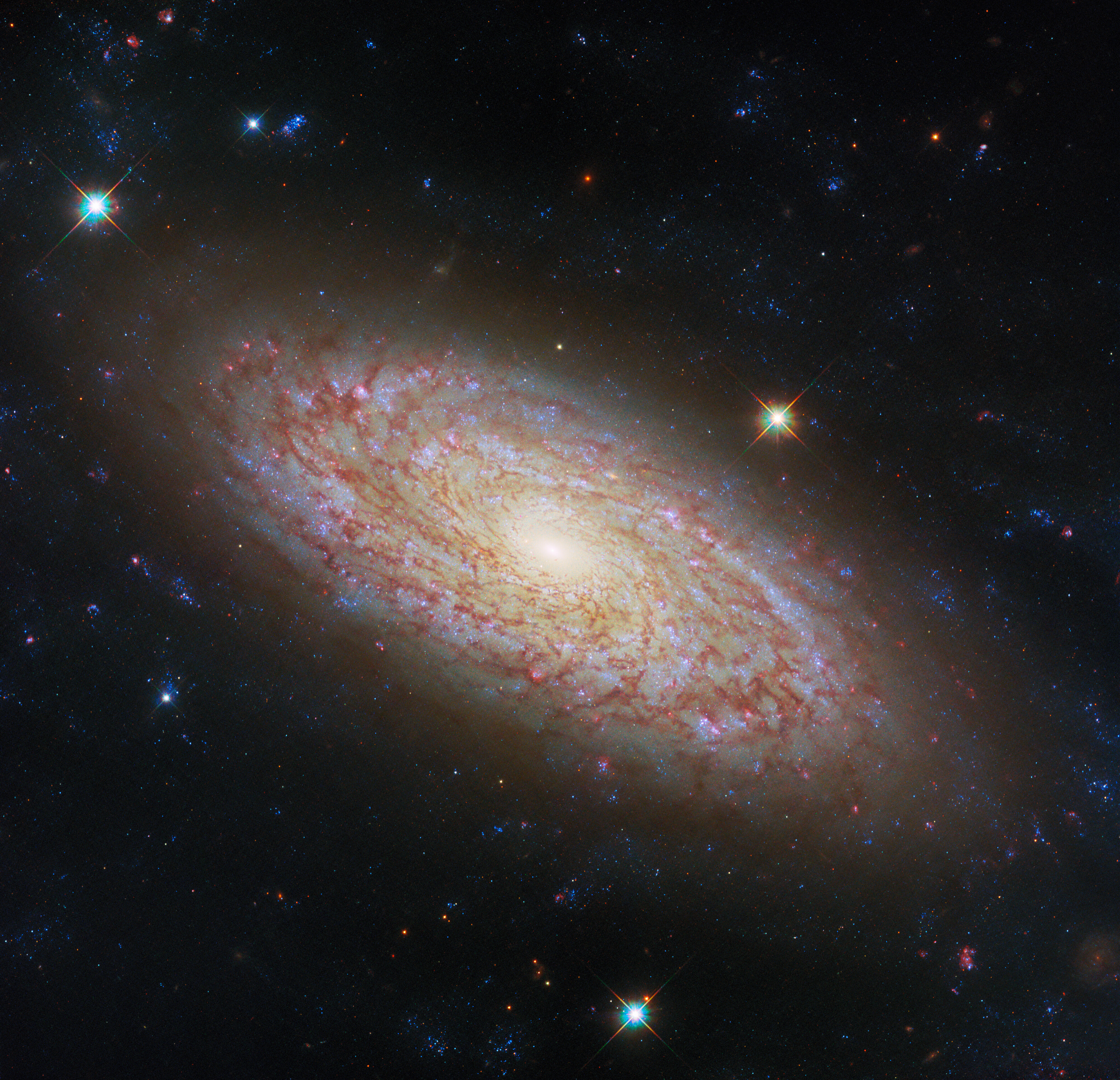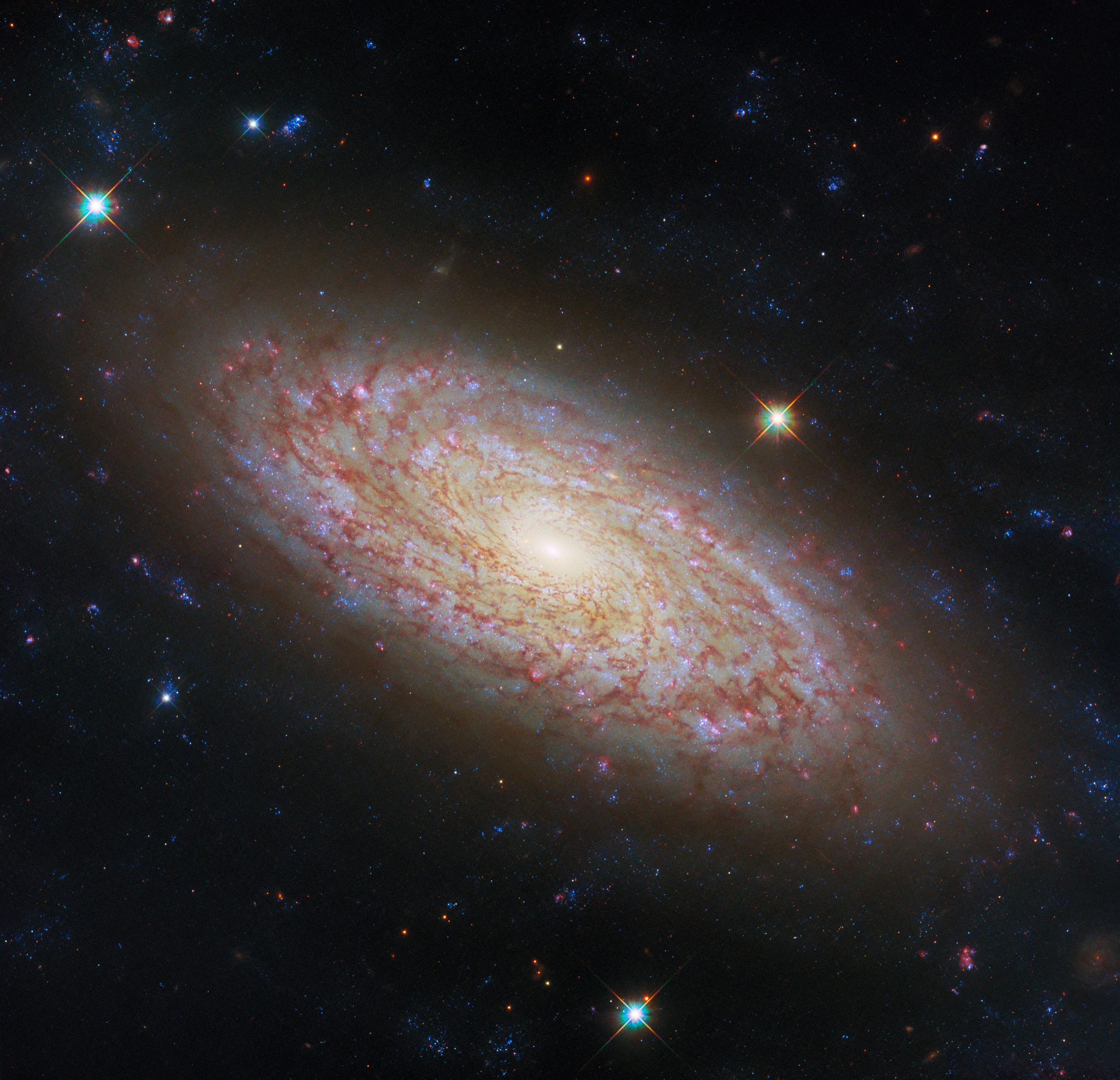
The Hubble Space Telescope at 35: A Heritage of Cosmic Exploration
This week, the Hubble Space Telescope commemorates a remarkable achievement—35 years of uninterrupted operation in space. A joint endeavor between NASA and the European Space Agency (ESA), Hubble has not only transformed academic literature but has also reshaped our perception of the cosmos. Launched on April 24, 1990, onboard the Space Shuttle Discovery, this orbiting observatory embarked on a quest to address some of the most profound questions regarding our universe. Now, three and a half decades later, it continues to thrive.
In celebration of this significant anniversary, NASA and ESA unveiled a collection of stunning images taken by the telescope, showcasing Mars shrouded in icy clouds, radiating star-forming regions, and captivating galaxies. These fresh images honor not only the telescope’s sophisticated capabilities but also a mission whose influence continues to resonate through both science and society.
Facing Challenges Head-On
Hubble’s journey to success was fraught with challenges. Shortly after its launch, scientists identified a defect in its main mirror—a spherical aberration that jeopardized the mission’s viability. However, instead of concluding in disaster, this became a pivotal moment. Between 1993 and 2009, five crewed Space Shuttle servicing missions revolutionized the compromised observatory into one of the most formidable scientific instruments ever created. Astronauts, including ESA representatives, integrated new devices, upgraded hardware, and ultimately granted Hubble a renewed chance at success.
Today, Hubble serves as an icon of engineering brilliance and global collaboration, having completed nearly 1.7 million observations of around 55,000 unique astronomical targets. This wealth of data has fueled over 22,000 scientific papers, cited more than 1.3 million times—making it one of the most fruitful scientific instruments in history.
Seeing Deeper and Clearer Than Ever Before
Before Hubble’s inception, astronomers faced significant hurdles in observing beyond the distortions caused by Earth’s atmosphere. The telescope offered clarity ten times greater than ground-based instruments of its era, able to detect celestial objects one-billionth as bright as the faintest light visible to the naked eye.
Its achievements are truly groundbreaking. Hubble has:
– Accurately measured the universe’s expansion rate with unparalleled precision.
– Delivered vital insights regarding dark energy.
– Confirmed the presence of supermassive black holes residing in galactic centers.
– Captured the inaugural atmospheric study of exoplanets.
– Played a crucial role in delineating the large-scale architecture of the cosmos.
Anniversary Exhibition: A Peek Through the Cosmic Perspective
The latest image series underscores Hubble’s lasting scientific prowess:
– Mars (December 2024): Striking images display the Red Planet amidst its northern spring. Delicate water-ice clouds float above its surface, providing clear views of Olympus Mons, Valles Marineris, Syrtis Major, and the Hellas impact basin.
– NGC 2899 – Planetary Nebula: A bright, lobed cloud resembling a luminous moth. Found 4,500 light-years away in the Vela constellation, its shape is influenced by intense radiation from a hot white dwarf and possibly its stellar companions.
– Rosette Nebula: A stellar birthplace situated 5,200 light-years away. Hubble zoomed in on a 4-light-year section of this nebula, revealing dark, thick clouds of hydrogen gas sculpted by radiation and stellar winds.
– NGC 5335 – Flocculent Spiral Galaxy: A face-on depiction of a galaxy with uneven star-forming areas rather than well-defined spiral arms. A central bar channels gas inward, igniting new stellar formation in a phenomenon observable in about 30% of galaxies.
European Contributions and Cosmic Milestones
ESA researchers have fully leveraged Hubble’s capabilities, frequently surpassing the 15% telescope time assured through their partnership. Key European-led achievements include:
– The discovery of intermediate-mass black holes.
– Anomalous supernova-like explosions occurring far from recognizable galaxies.
– Identification of the most distant single star recorded: Earendel, originating from an era when the universe was under a billion years old.
Investigating Our Local Environment
Hubble’s abilities are not limited to the depths of space. Within our solar system, it has monitored planetary weather variances, uncovered puzzling atmospheric phenomena like the “spokes” in Saturn’s rings, and even found evidence of water vapor on Jupiter’s moons, Europa and Ganymede. The OPAL (Outer Planet Atmospheres Legacy) initiative, which just celebrated ten years of observations, continues to disclose astonishing solar system dynamics.
A New Collaborative Era
Hubble no longer ventures into the cosmos in isolation. It now operates in conjunction with the James Webb Space Telescope (JWST), which was launched in 2021. Hubble specializes in ultraviolet and visible wavelengths, while Webb explores the infrared spectrum. Together, they offer a more comprehensive view of the universe.
This partnership represents a transition from one generation of space telescopes to another—though
